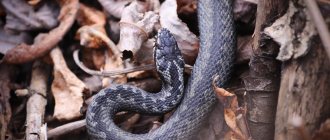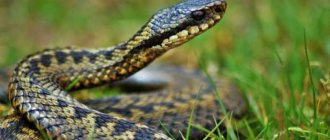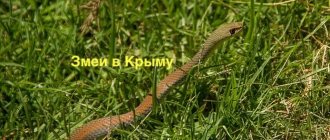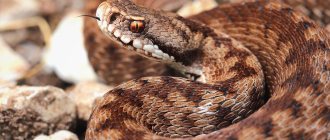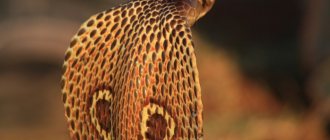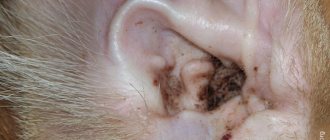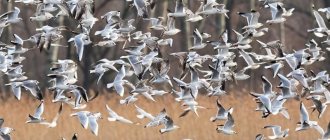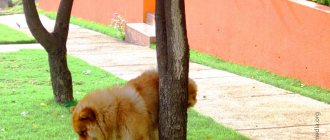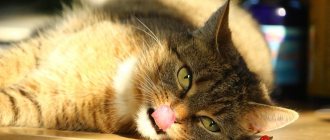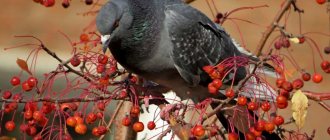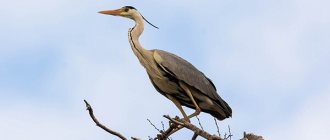- Wild animals
- >>
- Reptiles
The Caucasian viper previously lived in large numbers on the territory of the Russian Federation.
It is distinguished by its variegated color, making it impossible to confuse it with any other snakes. The behavior and vital functions of this reptile are not fully understood, since its numbers are small and, moreover, they are constantly declining over time. The snake belongs to the category of poisonous reptiles, whose poison is very dangerous to humans. However, she will never attack first. When meeting a person, the viper prefers to hide. It attacks only when it perceives a clear threat.
Origin of the species and description
Photo: Caucasian viper
The Caucasian viper belongs to the vertebrate reptiles, separated into the order Scaly, suborder of snakes, family and subfamily of vipers, genus of true vipers, species Caucasian viper.
This snake has many names. One of them is Kaznakov’s viper. It is under this name that zoologists define it. That’s what Russian researcher A.M. called it. Nikolsky. He was the first to describe it back in 1909. He named it in honor of the famous naturalist and explorer Kaznakov, who was a model and example for Nikolsky. The snake is also often found under the name of the chess viper. This is due to the checkerboard pattern on the viper’s body.
Video: Caucasian viper
Snakes are considered to be very ancient creatures. The first reptiles appeared on our planet from 200 to 250 million years ago. Scientists believe that they appeared in the Triassic period, and are the same age as dinosaurs. The first snakes had limbs. However, a large number of enemies forced them to hide in the ground. The limbs created great difficulties, so later in the process of evolution the forelimbs disappeared. The hind limbs remained, but over time they became much smaller and became like small claws that are located at the base of the tail part of the body.
The snake finally lost its limbs about 70-80 million years ago. Many scientists also assumed that the ancestors of snakes were large lizards, presumably geckos. Among all the reptiles existing on earth, they have the maximum resemblance to snakes. In the process of evolution, snakes divided into species and spread to different parts of the world. Viper snakes number about 50-60 species.
Description of the grassy green whipweed
The individual is a small green snake belonging to the colubrid family. The body length of reptiles can reach up to 2 m. Outwardly, it resembles a thin whip. The head section is thin and pointed in shape. The diameter of its body does not exceed 2 cm.
The back is decorated in bright green. Some representatives have inclusions of yellow circles. The abdominal cavity is a light beige color with a relief texture. Another distinctive feature is the large eyes with a longitudinal pupil.
Reptiles are common in flat areas and mountainous areas. They prefer to hide in dense vegetation and tall trees. Activity is observed in the first half of the day. At this time, the sun's rays evenly warm the snake's body.
It feeds on small frogs, lizards and mice. Snake venom of this species is not dangerous to the human body. When bitten, the victim experiences redness and slight itching.
This category of reptiles is considered viviparous. In one litter she can give birth to up to 15 baby snakes. The photo of a green snake shows an individual of this species.
Appearance and features
Photo: Caucasian viper in the Krasnodar region
This snake has the most striking and recognizable appearance among all vipers living on the territory of the Russian Federation. The head, like that of other representatives of this family, is wider than the body and somewhat flattened.
The snake belongs to the category of medium-sized reptiles. It reaches about 40-70 centimeters in length. This reptile species has pronounced sexual dimorphism. Males are significantly larger than females in body size. Males also have a smoother transition from the head to the neck area. The long body smoothly flows into a narrow, short tail.
The Caucasian viper has fairly developed and powerful lungs, which, together with wide nostrils located at the bottom of the nasal shield, produce a terrifying hissing sound that resembles the sound of a punctured ball.
Externally, the viper is very similar to a snake. However, it differs from it in the absence of yellow spots on the side surfaces of the head and in the vertical pupil. The pupils have the ability to contract and expand, filling almost the entire eye. Another distinctive feature of the viper from the grass snake is the presence of poisonous fangs in the mouth. The length of the viper's fangs is about 3-4 centimeters.
The Caucasian viper can have different colors depending on the region where it lives. Snakes that live in forested areas have a muted, gray color that is almost invisible in the foliage. Snakes living in mountainous areas are darker, almost black in color. Reptiles that live on the plains have brighter colors and may have an orange or deep red skin tone. Some individuals may have a red or orange stripe that runs across the entire body.
The older the snake, the more colored elements it has on its skin. They randomly cover certain areas of the skin, giving the impression of a checkerboard pattern.
Non-venomous snakes of the Black Sea region
Most of the snakes that can be found in the Black Sea region lack poisonous glands. Only their bites and the resulting wounds can pose a certain danger to humans.
Skids
The family of snakes that live on the shores of the Black Sea is quite numerous. Let us list its most prominent representatives.
- Olive snake. This is a small, olive-green snake no longer than one meter with a small graceful head and large eyes. The olive snake is not aggressive and bites a person only when trying to catch him.
- Aesculapian snake. The golden body of the snake is small and rarely exceeds one meter in length. The snake prefers to spend time on tree branches, rarely descending to the ground. Having met a person, he freezes in place, then slowly crawls away to a safe distance.
- Yellow-bellied snake. This is one of the largest European snakes, reaching two meters in length as an adult. Yellow-bellied snakes prefer open and dry areas where they hide in the grass, waiting for prey or basking in the sun. They are quite aggressive and can attack humans if they get too close.
Yellow-bellied snake. Wikimedia Commons / Kiril Kapustin (CC BY 2.5)
Snakes
Several species of snakes live in the Black Sea region - Colchian snakes, water snakes (or chess snakes), as well as ordinary ones. They are all completely harmless and prefer to avoid meeting people. If in an accidental collision he does not have time to escape, he pretends to be dead. When they see danger, water snakes secrete a white liquid from their skin pores with an unpleasant, pungent odor.
Already ordinary. Wikimedia Commons/Danny Steaven (CC BY-SA 3.0)
copperhead
A small snake with a copper-colored body rarely reaches a length of 80 cm. Usually it does not show aggression and avoids meeting people, but in April-May, during the mating season, it may even try to bite if you come too close to it, extend your hand or leg. The bite is not poisonous to humans, but in some people the secretion of the copperhead glands can cause an allergic reaction with swelling and fever.
Common copperhead. Wikimedia Commons/Christian Fischer (CC BY-SA 3.0)
Legless lizards
- Spindle (spindle). This reptile can easily be confused with the copperhead snake, but upon closer examination the differences are obvious. The body of the spindle is wider and completely devoid of a neck, and the eyes are equipped with eyelids and are capable of blinking. When crawling, the spindle writes “figure eights”, since it cannot rely on its scales while moving, as snakes do. But she knows how, like all lizards, to throw off her tail when in danger.
- Yellow Tummy. When young, this legless lizard is striped. When mature, it becomes copper-brown with a yellowish belly. Ear openings and blinking eyelids are noticeable on the head; rudiments of hind limbs are visible in the lower part of the body in some specimens. Yellowbellies are very useful, as they feed on small pests - beetles, locusts, snails, etc.
Spindle. Wikimedia Commons/Waugsberg (CC BY-SA 3.0)
Yellow Tummy.
Wikimedia Commons / Václav Gvoždík (CC BY-SA 2.5) Now rate the article
Average score 4.2 / 5. Number of votes: 25
No ratings yet!
Where does the Caucasian viper live?
Photo: Caucasian viper snake
The habitat is quite widespread.
Geographical regions of reptile habitat:
- North America;
- South America;
- Australia;
- Greater Caucasus;
- some regions of Turkey;
- Georgia;
- Abkhazia;
- New Zealand;
- Europe;
- Asia.
This type of snake can live in almost all regions of the earth, regardless of climatic conditions. Today, the chess viper is a rather rare snake; its habitat is narrowing every year. The viper prefers to crawl into mountainous areas, however, to an altitude of more than 900 meters above sea level.
The viper can be found almost everywhere - in forest areas, on plains, ravines, near water bodies. Very often, a snake can hide in thickets of blackberry bushes, in fields in haystacks or mown grass. Vipers are often found in close proximity to human settlements. In this case, such a neighborhood is dangerous for both parties - both for the person and for the poisonous snake itself. If a person finds a snake near his home or garden, he will definitely try to destroy it. The snake is very dangerous due to the presence of poison, which can lead to death or the development of serious complications in humans.
How does a snake reproduce?
Sexual maturity occurs at the age of 6 months. At this time, females lay up to 15 eggs after mating. This period starts from the end of September to the beginning of January. The incubation period for baby snakes is 15 weeks. Newborns reach 50 cm in length.
The lifespan of the green snake in the wild is up to 16 years. If the snake is kept in a home terrarium, then the life of the reptile increases to 25 years, provided that the diet and maintenance rules are followed.
Snakes of this species are common in the tropical forests of East Asia. Also seen in the Philippines. They prefer subtropical conditions, which provide the necessary humidity. Reptiles love to settle in ravines of river valleys, dense thickets near swamps and near rocky areas.
What does the Caucasian viper eat?
Photo: Caucasian viper in Russia
The viper is a venomous reptile and therefore a predator. The main source of food is rodents and small invertebrates. The snake is a skilled hunter. She prefers to hunt at night. The snake hides in ambush and waits patiently. When the prey gets as close as possible, it rushes at it with lightning speed and sinks its fangs with a poisonous secretion. The victim dies within a few minutes. After this, the chess viper begins eating, swallowing the prey whole. The digestion process takes several days.
What is the food supply:
- small rodents;
- lizards;
- lizards;
- frogs;
- shrews;
- jerboas;
- small birds;
- various types of insects - locusts, beetles, caterpillars, butterflies.
The Caucasian viper has a simply brutal appetite. She can eat many times her weight. For this reason, she has to spend a huge amount of time in ambush waiting for prey.
The tool for successful hunting is a well-developed sense of smell. The main tool for hunting is a forked tongue, which the snake constantly sticks out. The reptile slowly crawls along the trail. With her tongue she lightly touches the surface of the ground where the victim passed. She then places the ends of the tongue into the Jacobson's organ, which is located in the upper palate. Next, the received information is processed, which allows snakes to determine as accurately as possible how far away the prey is and what size it is.
The chess viper has a very complex venomous apparatus. It includes sharp poisonous teeth and glands that produce a super-powerful poisonous secretion. The teeth are located on the short maxillary bone. Thanks to this structure of the oral apparatus, the upper jaw opens almost 90 degrees, while the teeth stand in a vertical position. Viper venom is very toxic. It causes extremely painful sensations, swelling and redness of the bite site. The poison immediately enters the lymph nodes and spreads throughout the body, destroying red blood cells.
If you meet a snake
When traveling through the territory of the Caucasus, it would be useful to be able to independently distinguish poisonous snakes from representatives of reptiles that are safe for humans:
- a poisonous snake differs from its harmless relatives in the special structure of its teeth, which are longer, most often curved, located in the front part of the upper jaw;
- dangerous reptiles, as a rule, have a triangular head, while in any non-poisonous species it is oval;
- in most cases, the eyes of poisonous snakes have a vertical rather than a round pupil;
- between the eyes and nostrils of poisonous representatives there are special pits that help detect warm-blooded prey;
- the snake can be recognized by a pair of bright yellow or orange spots located on the sides of the head;
- The tail scales of dangerous reptiles are arranged in a single stripe, while non-venomous snakes are characterized by a double number.
When meeting any reptile, you should not try to touch it. High boots will be the best protection for your feet, and at night a flashlight will help reduce the risk of a snake attack. To roost for the night, it is necessary to avoid areas with rotten stumps or hollow trees.
Experts who have been working with venomous snakes of various species for a long time claim that such reptiles are capable of biting a person only in case of emergency, in self-defense. Therefore, it is strictly forbidden to chase a snake out of curiosity. This behavior most often provokes an attack by a reptile.
Return to content
Features of character and lifestyle
Photo: Poisonous Caucasian viper
The viper is a poisonous snake. She tends to lead a solitary lifestyle, or in a couple. Mainly nocturnal. During the day it mostly lies down in a secluded place. When darkness falls, he goes out hunting. Vipers spend a significant part of their time searching and catching food.
This type of reptile leads a territorial lifestyle. A single snake or a pair zealously defends its territory from uninvited guests. They wait out the winter in rock crevices or burrows. Many species of snakes die during the winter season. But vipers wait out the cold quite calmly.
Interesting fact: Caucasian vipers mainly choose burrows or crevices located at a depth of 2 meters or more as shelter for the winter period. Thus, these places are located below the soil freezing level, which allows you to withstand cold and severe frosts completely calmly.
The Caucasian viper has a large number of enemies in natural conditions. Therefore, she is extremely careful and chooses her hiding place very carefully.
Stinging and attacking snakes of the North Caucasus
5. It is extremely rare to meet this beautiful and unusual inhabitant of the foothills and mountains with a rocky landscape. The Aesculapian snake loves places where you can spend time during the hottest period of the day without giving anything away. Sometimes these are even old stone houses. The snake can be found mainly in the forest zone of Stavropol, Kabardino-Balkaria and Karachay-Cherkessia, as well as in Adygea. To the west and east this snake is practically not found. Pay attention to the coloring: the Aesculapian snake is usually very shiny, and the color can vary from olive-gray to woody brown. It has no special patterns on the body.
This snake is dangerous for both children and adults. He can let a person approach without fear and make throws in his direction. The snake bites sensitively enough not to try to repeat the experience of such an acquaintance. In exceptional cases, a bite can cause severe blood poisoning.
Source
Social structure and reproduction
Photo: Dangerous Caucasian viper
The mating season for snakes begins with the onset of spring.
Interesting fact: This type of viper does not lay eggs, like other snakes, but gives birth to fully formed offspring. The formation of eggs and the hatching of young ones from them occurs internally. Viable and fully formed individuals are born.
The period of birth of offspring occurs at the end of summer or beginning of autumn. One viper can give birth to 7 to 12 cubs at a time. The birth process occurs in a rather unusual way. The female wraps herself around a tree, leaving her tail part in a canopy, and literally throws her cubs onto the ground. The small snakes that are born reach 10-13 centimeters in length. Most often, small snakes are light gray or light brown in color with a pattern characteristic of this type of snake. After birth they immediately moult. Subsequently, molting occurs on average twice a month.
Vipers that live in mountainous areas give birth once every two to three years. Female chess vipers are not particularly affectionate towards their offspring. On the second day after the birth of the offspring, small snakes crawl in different directions.
Green runner
This species is a large green snake, the body length of which can reach up to 2.5 m. Males are slightly shorter. Their length reaches 2 m.
A distinctive feature is their bright green coloring throughout the body. The tip of the tail and the head section are decorated with a light brown tint, allowing them to camouflage among green foliage.
Scales cover the entire body from the head to the tail. Their diameter does not exceed 2 mm. This makes the snake's body appear smooth. The abdominal region is decorated in pale green.
Green snakes live on the island of Panay. In times of danger, the snake inflates a large air sac under its lower jaw. Thus, it appears voluminous and dangerous to a predator.
Natural enemies of Caucasian vipers
Photo: Mountain Caucasian viper
Despite the fact that the chess viper is considered dangerous and very poisonous, it has many enemies in its natural habitat.
Enemies of the Caucasian viper in the wild:
- foxes;
- ferrets;
- copperheads;
- wild boars;
- some types of large feathered predators - owls, herons, storks, eagles;
- hedgehogs
It is noteworthy that hedgehogs do not eat dangerous, poisonous snakes, but simply fight with them. In most cases, it is hedgehogs who defeat the insidious poisonous reptiles. Surprisingly, toxic snake venom also does not have any harmful effects on wild boars.
Humans should also be considered among the enemies of chess snakes. People hunt snakes for valuable snake skin, meat and toxin. In alternative medicine in many countries, in particular in the countries of East Asia, a large number of all kinds of ointments, lotions, and creams are made based on snake venom. It is also widely used to make antidotes.
In many countries, the meat of poisonous snakes is considered a very rare and incredibly expensive delicacy. Many gourmets in eastern countries prefer to eat dried meat of the Caucasian or chess viper.
Is the poison dangerous for humans?
For humans, the bite of the Caucasian viper is dangerous, but not fatal. It is especially toxic in the spring, when snakes are just emerging from hibernation. The poison blocks blood clotting, but it is not enough for a person to die before the doctor arrives. Most bites occur because a person accidentally steps on a lethargic or sleepy snake. This is how she reacts to an immediate threat to her life.
If you are bitten by a Caucasian viper, you need to immediately go to the hospital or call an ambulance. You can try sucking out the venom within the first 10 minutes after you are bitten. If more time has passed and swelling appears, this means that the poison has spread into the tissues and it is no longer possible to suck it out.
Find out what to do if you are bitten by a snake.
Before the doctor arrives, it is imperative to immobilize the bitten person, since movement disperses the poison throughout the body along with the bloodstream. To reduce swelling, ice can be applied to the limb and the victim can be given plenty of fluids. This will reduce intoxication of the body.
Population and species status
Photo: Black Caucasian viper
The number of dangerous reptiles is constantly decreasing. The main reason for this situation is the development of ever larger territories by humans. This forces snakes to move further and further from human possessions, and their habitat is rapidly shrinking. Chess vipers tend to settle near human settlements. This provokes a person to exterminate snakes. Many reptiles die under the wheels of cars and agricultural machinery.
The situation is aggravated by the fact that reptiles rarely give birth to offspring. In addition, human activity, which provokes the displacement of snakes from their territory, contributes to their death. These are territorial reptiles that find it very difficult to take root in foreign, unfamiliar territory.
The decline in numbers is also facilitated by the lack of food supply. Chess vipers need a lot of food. Not all regions where these reptiles live have sufficient food supply. People destroy rodents as pests of agricultural crops. This also contributes to population decline. To date, scientists and researchers cannot determine the approximate population size.
